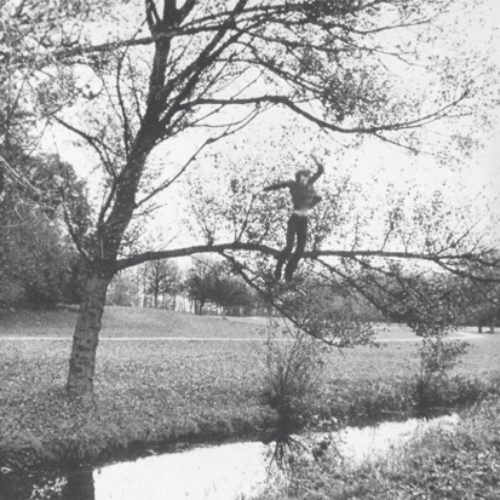There are a few different kinds of aggression circuits in the brain and body. One of them, rather than being merely anger operates under the SEEKING or the reward system where, like a predator, we seek out vigorously something that we want. With such enthusiasm to accomplish a task, our behaviors may appear aggressive because of our willingness to discard any obstacles that come in the way. This (occasionally) aggressive excitement is a necessity for overcoming obstacles, such as resistance of the pray, and to get us to persist in the face of difficulty.
Although fascinating, we are not going to discuss this type of aggression; it adheres more to the SEEKING system. Here, we will focus on the RAGE system. This neurobiological circuit contains a different type of aggression. RAGE, generally speaking, is derived from a threatening object or person that might interfere with a goal. Unlike predatory aggression, this RAGE is meant to damage or instill fear in the threatening animal.
These two forms of may ostensibly look like the same emotion because they can both result in causing damage to obstacles, but despite their core differences, they are also similar in another important way. Both forms of aggression have an essential reliance on the SEEKING system. The first form of aggression is just a manifestation of SEEKING as it comes into contact with obstacles. The other (RAGE) comes with the premise that one is seeking or has something of value that is under threat. This article explores how the RAGE system is reliant on the SEEKING system.
What Is the Difference Between an Obstacle and a Threat?
While SEEKING or predatory aggression has a focus on the object of desire, RAGE makes its object anything that would threaten those desirable objects. We are programmed with a deterrent mechanism that says to others, “do not to mess with me and my pursuits.” Thus, only by having pursuits, can we have RAGE.

It may at first seem as if the difference between these two modes of aggression are merely describing the same things with different words. SEEKING aggression is vigorously overcoming obstacles in the way of a goal, and RAGE is vigorously warding off threats to a goal. Is there much of a difference between a threat and an obstacle?
In fact, there is are essential differences in the ways we act towards obstacles and threats. Threats are meant to be deterred or neutralized. We can strike fear in those who might threaten us or we may simply destroy the threatening object. An obstacle towards a goal is only something that might get in the way of a goal, and one can easily find ways to avoid it. In this case, it never becomes the focus. The death of the prey is only a way of getting to eat, and that step would be skipped if possible. Whereas the death of a thief is the focus of RAGE, not the gold that the thief is trying to steal.
But this focus can shift in the frustration of obstacles. If one is not having success in something, their SEEKING behavior can shift to any of the others. SADNESS being one in which we accept our inability to get what we want, but RAGE being one in which the frustration is perceived as the result that there is some threat that needs to be deterred. Those who take frustration out on inanimate objects, may be perceiving the world itself as out to get them.
Now that we understand the distinction between the objectives of RAGE and SEEKING, we can see how our SEEKING can influence how we RAGE.
Our Goals and Values Determine Our RAGE
In a previous article, I talked about SEEKING as the core of all other emotions. With RAGE, this is most apparent. This is evident in how the status of the SEEKING response has a direct relationship with the extent in which the RAGE system becomes active.
There are basically two major perceptions necessary for the RAGE system to be activated. The first is the perception of a goal becoming interrupted or threatened. The second is that the thing doing the threatening can be deterred or destroyed by the person. If it were not, we would have more of another type of response, such as an avoidant FEAR response. The focus of this article is the former perception: the perception of the interrupted goal.

To demonstrate the RAGE process in a simple manner, quick observations can show that infants, if you only interrupt their reflexive movements slightly, they will show the characteristics of RAGE. At that age, goals are much less complex and it would be likely that this basic element of anger would persist past infancy and broaden to the complex goals that an adult would have.
J.J. Campos and his colleagues write:
“The neonate may show anger following the appreciation that a preadapted end state is blocked (e.g., impeding the baby’s movement when it is exercising reflexive movements . . .); an 8-month-old baby may show anger when she anticipates that an event will impede progress toward a visible goal; a 2-year-old may be angered by the content of a verbal remark that may thwart progress toward a symbolic goal, like play; a 10-year-old may be angered by an insult; and so forth.”
Quoted in Richard Lazarus’s Emotion & Adaptation
For RAGE to occur, we must perceive a threat to an active goal or the end which one has worked to achieve (a family, status, etc.). Clearly RAGE is felt not only in the frustrations of SEEKING, but also in response to threats to the things which we value, because they may be instrumental to future instances of SEEKING. Possessions, status, and self-image are all “objects” that improve one’s opportunity to accomplish goals. That is why threats to these can also result in RAGE responses and not just active goals.
As we explore the more social objects of SEEKING, the forms of RAGE broaden to more social resources. Besides interference with goals, anger can arise from someone attempting to harm us, betrayals of trust, being rebuffed, receiving unwarranted criticism, lacking consideration of others, cumulative annoyances, or pain.
Since having objectives is the precondition for RAGE, we must look at the characteristics and statuses of our goals to understand why we might be experiencing RAGE in moments that do not seem to clearly elicit it.
RAGE and the Status of Our Goals
The last connection between our SEEKING and RAGE systems that we should explore is how the different statuses and preconceptions of our goals can elicit RAGE when threatened. Here, I will bring up three different goal-status situations that related to the initiation of the RAGE system. I am sure we could come up with more to add this list, but these are the main preconceptions to our RAGE.
First, our expectation, a large influencer of the SEEKING mechanism, is vital to how we perceive threats to a goal. If we expect to get what we want, a threat to that expectation will be even more angering. What is interesting about the Campos et al. quote from earlier is that infants have a bodily expectation of their reflexes, and it is when those are interrupted, that they become angry. On a complex social scale, we may expect others to be synergistic with our noble goals, but that does not happen, hardly ever. It is also the things that are normally reliable, that when threatened, are particularly infuriating because our most solidified expectations are threatened. If you carry an idealistic expectation about how the world ought to be you will surely be constantly feeling like that worldview is threatened by the realities of existence and those who demonstrate other worldviews. Alain de Botton and his collaborative project The School of Life has made a video about this counter-intuition about hopefulness and anger. It’s called “How To Not Be Angry All The Time”.

Second, we may feel constantly angry without being able to do anything about it. We may feel hopelessly frustrated with the way things are structured. This is a cause of resentment and misplaced RAGE. The goals that we SEEK may be inadequately vulnerable. Perhaps we should narrow our goals to the things in our control. One of these might be becoming a better person, a better friend, and better mother, father, or child. If one puts too much stock into an easily threatened enterprise, one will always be on the lookout for threats. Goals in which their successes rest on a lot of luck can elicit frustration and RAGE from the high likelihood that there will be threats to them.
Third, the degree of frustration we have may be dependent on our closeness to the goal. This is partly because of the raised expectation of success, but also because of the effort that we had already put into achieving the goal. When we feel that we have worked hard towards a goal or suffered in its pursuit, and we are approaching consummation, interruption can elicit the most threatened response. Not only is the expected reward threatened, but all the work beforehand was undermined.
Along with these three types of perceptions about goal-orientations, there is also a complexity in the goals which was mentioned earlier. With these tools, you may now have a pretty good chance of understanding how your goals and your attitudes towards them may influence the frustration and RAGE that you might be feeling.



